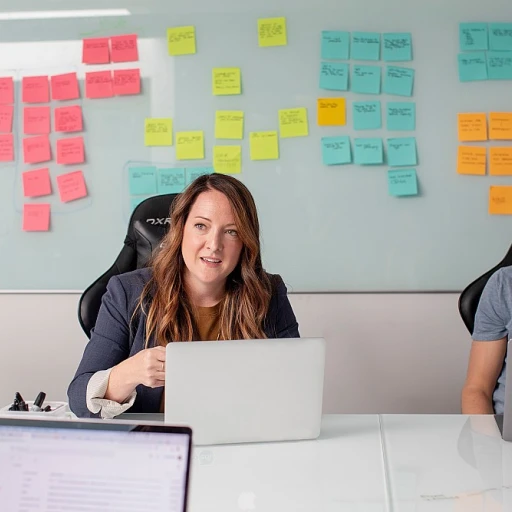Understanding the Importance of Personalization
Why Doing What Works for Me Might Not Work for You
In the wide world of employee engagement, it's plain to see that one size doesn't fit all. Sure, we all want to feel valued at work, but the way we get there can vary dramatically between individuals. That's where personalization comes into play. By tailoring efforts to individual needs and preferences, organizations can boost employee satisfaction and in turn, drive positive performance outcomes.
So, why does personalization matter so much? Well, employees, whether part of a bustling team or flying solo on projects, want to feel more than just another cog in the machine. This is about recognizing their unique contributions, giving personalized employee rewards, and crafting an environment that feels just right for them. If done right, hyper personalization makes employees feel seen and appreciated – not just for the work they do, but for who they are.
Constructing a personalized experience in the workplace involves understanding that every employee has a different set of motivations and work styles. This varies not just between teams, but from one employee to the next. Personalization efforts meet these needs by assessing individual preferences through feedback systems, data analytics, and performance management tools.
By acknowledging and addressing these varied needs, businesses can create an energized workplace culture where employees feel valued and engaged. It's not only about improving employee retention but also enhancing the overall employee experience and loyalty. Through personalization, a company doesn't just react to employee feedback; it proactively creates a better work environment, driving employee engagement to new heights. Learn more about
enhancing employee engagement in HR on our blog.
When organizations align with individualized approaches, they establish a feedback loop that encourages continuous learning and development. They are better equipped to address engagement issues, leading to a productive and satisfying workplace for everyone.
Identifying Individual Needs and Preferences
Knowing What Employees Want
To make sure employees feel valued and engaged, it's essential to understand their individual needs and preferences. This isn't just about guessing what might work; it's about using real data and feedback to create a personalized experience that boosts performance and satisfaction. Imagine a workplace where every team member feels their voice matters and their unique contributions are recognized. That's the goal.
Listening and Learning
Start by gathering feedback through surveys and one-on-one conversations. Ask the right survey questions to get a clear picture of what your employees value. Are they looking for more flexible work hours, or do they want more opportunities for learning development? Use these insights to inform your employee engagement strategies.
Using Data Wisely
Data is your best friend when it comes to understanding what makes your employees tick. With performance management tools, you can track engagement levels and identify patterns over time. This helps you pinpoint what works and what doesn't, allowing for real-time adjustments that keep employees engaged and motivated.
Creating a Supportive Culture
Building a supportive company culture is key to improving employee experience. When employees feel supported by their team and leaders, they're more likely to stay loyal and perform at their best. Encourage open communication and make sure employees know their feedback is valued and acted upon.
Want to learn more about keeping employees engaged? Check out trends you need to know for more insights.
Implementing Personalized Engagement Tactics
Rolling Out Proven Tactics for Personal Engagement
Deploying individualized tactics for employee engagement is where the rubber meets the road. It boils down to integrating applicable, personalized actions into your organization's daily operations. The aim is to ensure that each employee feels valued and empowered, leading to a noticeable boost in job satisfaction and performance.
### Build a Rich Feedback Culture
Encourage open communication channels where employees feel comfortable sharing their thoughts and feedback. Use real-time feedback tools to tweak ongoing initiatives and align them with the evolving preferences of your team. Never underestimate the power of listening to your people—it's the heartbeat of making employees feel truly recognized.
### Recognizing Achievements
Consider how best to achieve effective and personalized recognition. Employee recognition can range from rewarding milestones and accomplishments to celebrating small, everyday wins. Tailor the rewards to what individual team members appreciate most—some may value public acknowledgment, while others might prefer a quiet one-on-one with a senior leader.
### Create Tailored Learning Paths
Offer tailored learning and development opportunities that resonate with each employee’s objectives. Whether it’s a workshop, a seminar, or an online course, customize learning paths that mesh with personal career goals. Give your people the chance to grow, adapt, and innovate within your organization.
### Leverage Personal Preferences
When managing performance and engagement employee strategies, remember to match tasks and projects with personal strengths and interests. This kind of hyper personalization not only enhances productivity but improves the overall employee experience.
### Adapting to Cultural Nuances
Understanding the subtle cultural nuances within your diverse workplace can guide personalized engagement activities. Adjust strategies to integrate cultural considerations, making engagement initiatives more inclusive and comprehensive, as seen in one
journey to a happier workplace.
Personalizing employee engagement actions isn't just an idea—it's a necessity in the modern work environment. Each touchpoint, whether formal or informal, carries the potential to improve employee loyalty and retain talent. Such efforts foster not only a productive work setting but also nurture a community where individuals can thrive.
Innovation in personalization reflects our ongoing commitment to shaping a workplace that stands the test of time—one that's consistently aligned with the nuanced needs of our dedicated employees.
Measuring the Impact of Personalized Engagement
Keeping an Eye on the Results
Personalized engagement in the workplace sounds great, but you might wonder how to actually know if it's working. It's important to measure how these efforts are impacting your employees and the company as a whole. This isn't just about checking boxes or following trends—it's about creating an experience where employees feel valued and are motivated to give their best.
To start, consider using employee feedback as a core tool. Surveys and real-time feedback mechanisms can provide insights into how team members perceive their work environment and what improvements can be made. Don't worry, it doesn't have to be all stiff and formal. Tailor the survey questions to capture meaningful data without overloading everyone with too many items.
Real-time data analytics can also be a game changer. With the right tools, you can track engagement, performance, and employee loyalty to see if the personalized approaches are hitting the mark. This kind of data can guide performance management and inform decisions on areas like learning development.
Another crucial point is to recognize and reward engaged employees. Public acknowledgment of hard work boosts morale and reinforces the personalized employee experience. After all, employee recognition is a powerful motivator that goes beyond a simple "thanks".
Measuring the impact also allows you to identify the strengths and weaknesses of your personalized engagement efforts. It’s about fine-tuning to align better with individual needs and company goals.
Remember, personalized employee engagement is not a one-time effort but an ongoing process of testing and adjusting strategies to keep everyone fired up and loyal to the company.
Overcoming Challenges in Personalization
Facing the Hurdles of Making it Personal
So, you've got this amazing idea to personalize employee engagement in your company, but things aren’t always as smooth as you’d wish. Personalization doesn't come without its share of bumps in the road. Let's figure out how to tackle these hurdles together.
First off, there's time. With the fast pace at which workplaces often operate, dedicating enough time to understand each team member’s unique needs is tough. It's like trying to catch a moving train! You might feel the pressure to just stick to one-size-fits-all strategies.
But if we look at stories from some organizations that have taken this leap, they suggest breaking it down. Start small by setting dedicated time slots weekly to gather insights directly from employees through feedback sessions or performance conversations. Remember, real-time feedback loop tools can help make this process more efficient and less intrusive.
Then, there's data – lots of it. Personalization relies heavily on good data about your employees, but not everyone’s got that readily available. The struggle here isn't just collecting it, but also analyzing and applying it in meaningful ways. Inconsistent or incorrect data can lead to misguided personalization efforts, turning the experience into a frustration for both employees and management.
One practical approach is using existing employee engagement surveys as a foundation. Consider refining those questions to unearth valuable insights about what motivates each individual or how they perceive their work environment. This can set a strong basis for personalizing initiatives without requiring a complete overhaul of your data collection methods.
Next up is the performance management systems. Sometimes, they’re not quite designed to support hyper personalization. Old-school systems are more about blanket policies than personal touch. If your system isn’t flexible, it can feel like dragging a ball and chain around when trying to inject personalization into the work culture.
Here, upgrading to systems that provide flexible, tailored options for managing employee experience and recognition can help. These modern tools support hyper personalization and give employees the feeling that their distinct contributions are valued and rewarded.
Finally, there's employee resistance. Not everyone welcomes change, even when it's for the better. Employees may fear that personalization, especially around feedback, means more scrutiny and less autonomy.
To combat this, communication is key. Highlight how personalization benefits everyone involved by creating dialogues that address fears and emphasize support rather than control. Engaged employees are those who feel valued and respected, so fostering openness in your work environment will help reduce anxiety about personalization.
Navigating these obstacles isn’t a walk in the park, but with persistence and the right approach, your efforts in crafting a personalized employee journey can ultimately lead to increased employee recognition and improved loyalty. By overcoming these challenges, you not only enhance the individual experience but also contribute significantly to the business outcomes of your organization.
Future Trends in Personalized Employee Engagement
The Future of Personalized Approaches
To imagine what's next for employee engagement, picture the workplace as a diverse hub where every team member feels valued and engaged. Organizations are slowly recognizing the importance of hyper personalization in boosting employee performance, satisfaction, and loyalty. As technology evolved, so did the tools and methods available for businesses to offer personalized experiences.
One significant trend is the emphasis on real-time data. Real-time insights from performance management systems can help tailor initiatives to improve employee engagement more promptly. This means feedback loops are shorter, and adjustments can happen at lightning speed to ensure an optimal work environment.
On the tech side, learning development platforms are increasingly using AI to customize learning paths based on individual employee needs. This hands-on approach ensures employees receive the specific skills and knowledge relevant to their career growth, ultimately enhancing their experience and loyalty.
Moreover, personalization tools are stepping up their game. No longer about mere performance scores, these tools now help in crafting personalized employee engagement strategies that recognize unique contributions and understand distinct preferences, rewarding employees in ways that truly resonate with them.
Yet, integrating these advanced methods isn't without its hiccups. Organizations must balance between privacy concerns and collecting meaningful data. Employees are more aware and protective of their information, which means trust-building is crucial.
As times change, so does company culture. A future workplace that prioritizes hyper personalization will likely see high levels of integration between technology, employee feedback, and personalization. The benefits are clear: more engaged employees, improved business outcomes, and a healthy workplace culture that thrives on mutual respect and open communication.
By staying ahead of these trends and embracing personalization in employee engagement, businesses can set a course for future success and continuous improvement.











